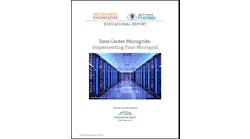Texas appears to be headed for a precarious summer with the potential for a tight power supply – a situation that could create opportunity for quick response microgrids.
The Electric Reliability Council of Texas (ERCOT), the grid operator that manages the flow of electric power to 24 million Texas customers, issued a warning signal in late 2017. The buffer between supply and demand appears likely to be slimmer this summer than ERCOT would like.
The grid operator calls this the ‘planning reserve margin,’ a resource adequacy measure that ERCOT strives to keep at a minimum of 13.75 percent of peak electricity demand, far more than the 9.3 percent it forecasts for the summer.
The problem? Texas had a rash of coal-fired plants announce that they plan to shutdown. That – and some project delays and cancellations – left ERCOT facing a 7,200 drop in generation capacity for the summer, a period when hot days can create peaks in energy demand.
Energy trends in Texas are always important because it is the largest electricity producer and consumer among the 50 states. But this signal, in particular, calls for the attention of microgrid operators because they can respond fast should the grid suddenly find it has too much demand and too little supply.
Thomas McAndrew, president and CEO of Enchanted Rock (ERock), has been in the thick of the Texas market for some time. For him, the ERCOT forecast is not a surprise but fits the pattern he’s seen coming for awhile.
As McAndrew sees it, the market is providing exactly the kind of signals it should to move away from high carbon power production toward cleaner energy.
“We’re encouraged by the direction the ERCOT market is taking from the standpoint of retiring the older, dirtier, less efficient plants and replacing them with renewables and quick response capacity, like what we provide,” he said. “I think it’s a favorable trend, not just in ERCOT but also across the industrialized grids that are undergoing a similar transition.”
ERock made the news last summer when its microgrids kept convenience stores and service stations operating in Houston during Hurricane Harvey. ERock creates virtual microgrids out of distributed generation (DG), in this case natural gas-fired generators located on its customers’ premises. During a power outage, the generators provide backup power for the buildings. The rest of the time, when conditions are normal, the microgrids provide services to bolster the central grid.
The microgrids are particularly adept at offering quick response when an instantaneous capacity shortage occurs on the grid. Sudden shortfalls occur for various reasons, perhaps because of a spike in demand during extreme weather or the sudden failure of a power plant.
In Texas, the growing use of renewable energy also creates increasing demand for quick-response microgrids, since wind or solar energy can drop off suddenly with a change in weather conditions.
Long-term trend favors quick response microgrids
Of course, it remains to be seen what the summer will actually bring; ERCOT could revise its forecast this spring if the capacity situation looks less dire.
Either way, McAndrew sees the forecast in keeping with longer term energy and weather trends that underscore the need for quick response microgrids in Texas.
Rich in wind and solar energy resources, the state is a center for renewable energy development. Utility-scale wind facilities represented nearly one-sixth of the state’s total generating capacity, 21,450 MW, as of the end of 2016, according to the Energy Information Administration. Meanwhile, utility-scale solar installations grew 10 times from 2011 to 2016, reaching 580 MW.
And the storms keep coming. McAndrew noted that Hurricane Harvey wasn’t Texas’ only weather calamity last year. Mega downpours also popped up without notice, causing flooding and power outages.
“Our view is the value of quick response assets will continue to increase over time with this transition, coming from all sources: DG, storage, load controls, etc., all of which we integrate into our microgrids,” McAndrew said.
What’s your take on the role of quick response microgrids in the Texas market? Post your thoughts below or on our LinkedIn group, Microgrid Knowledge.






